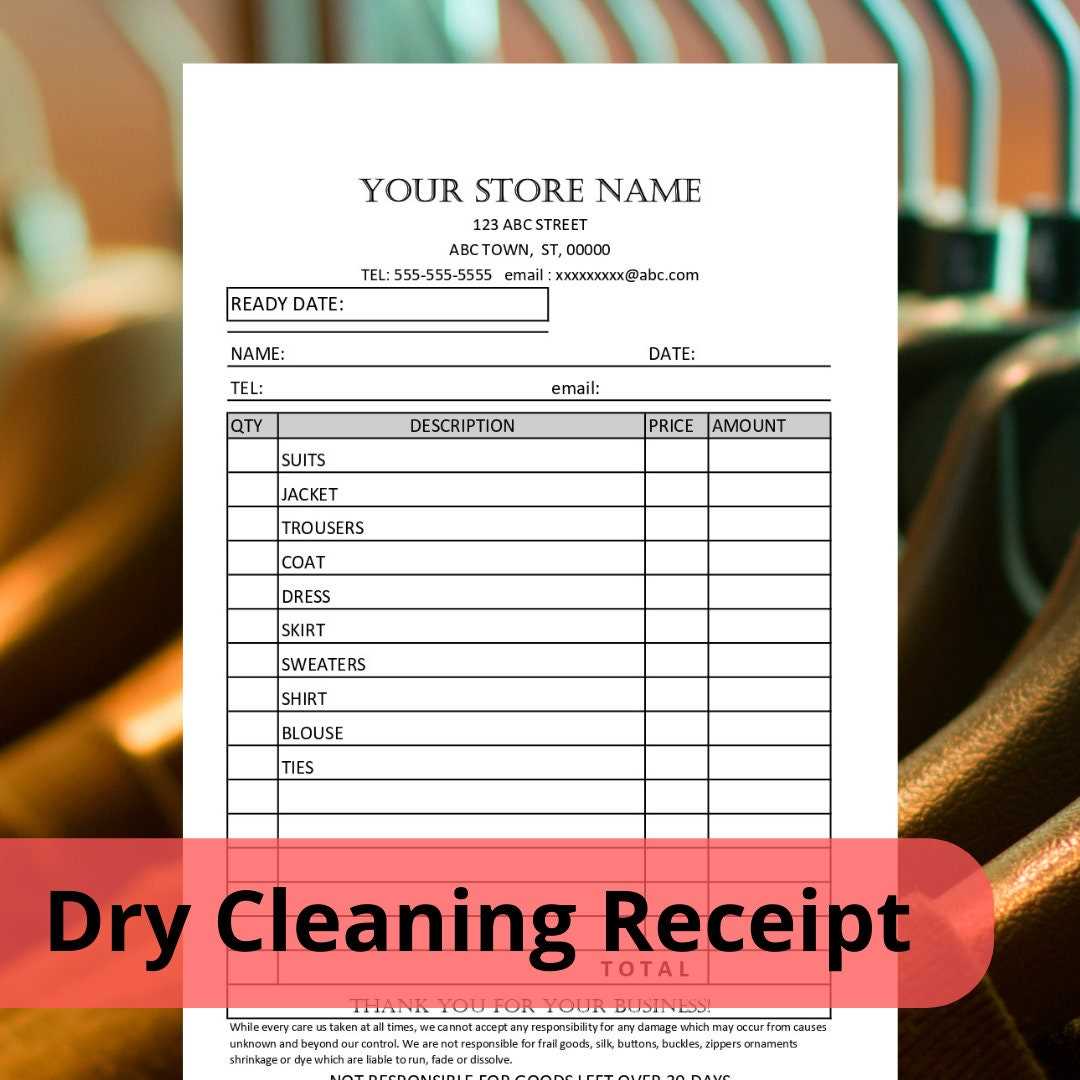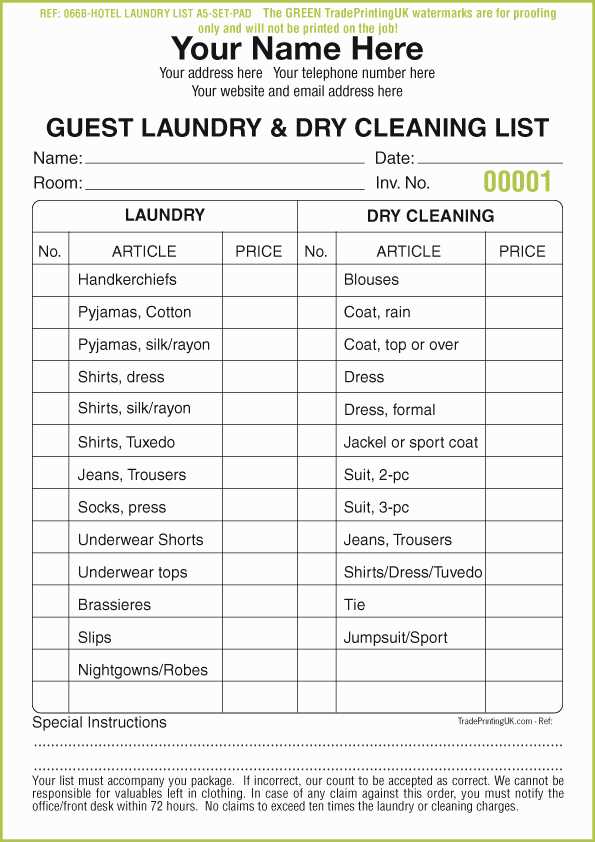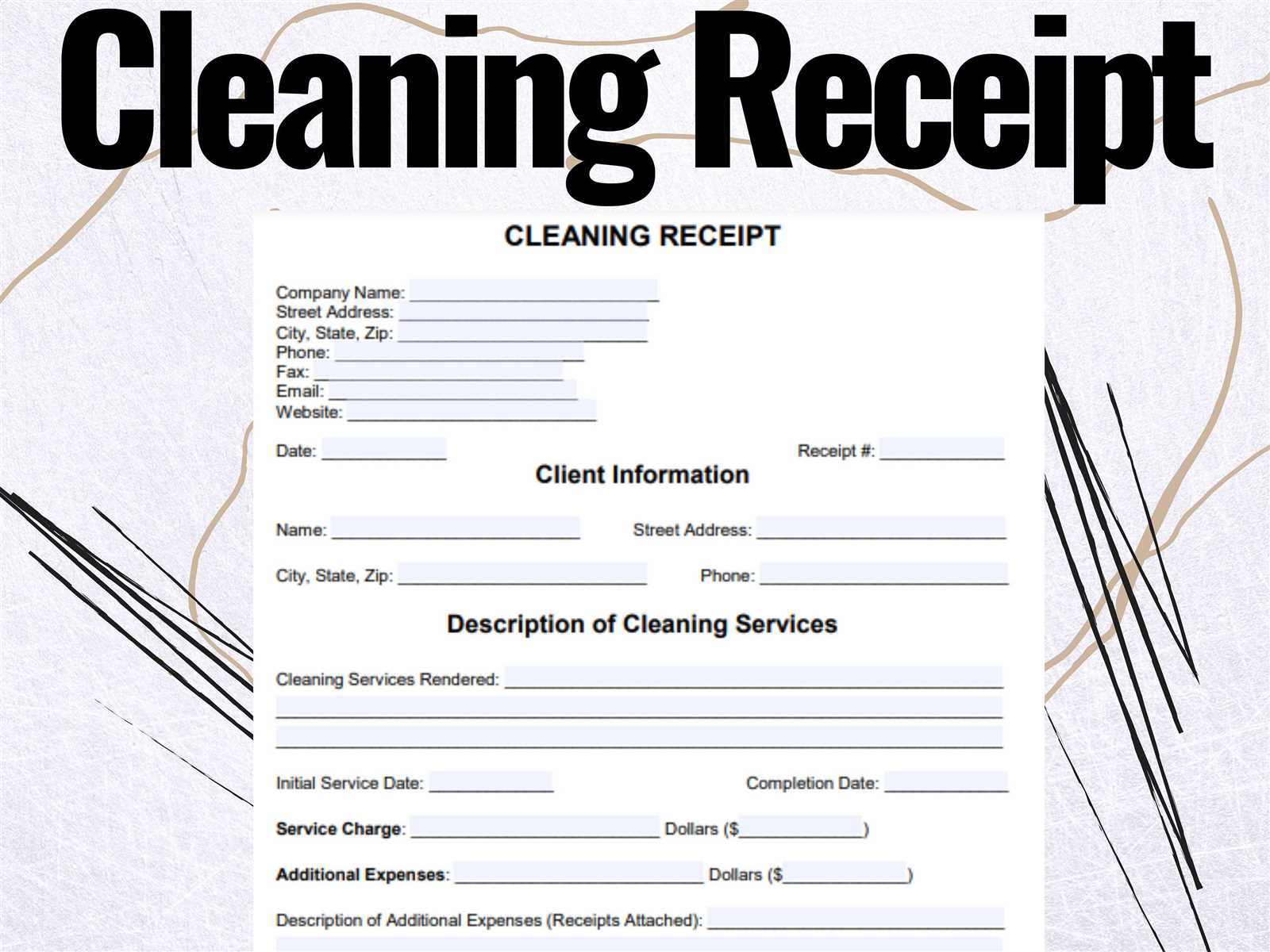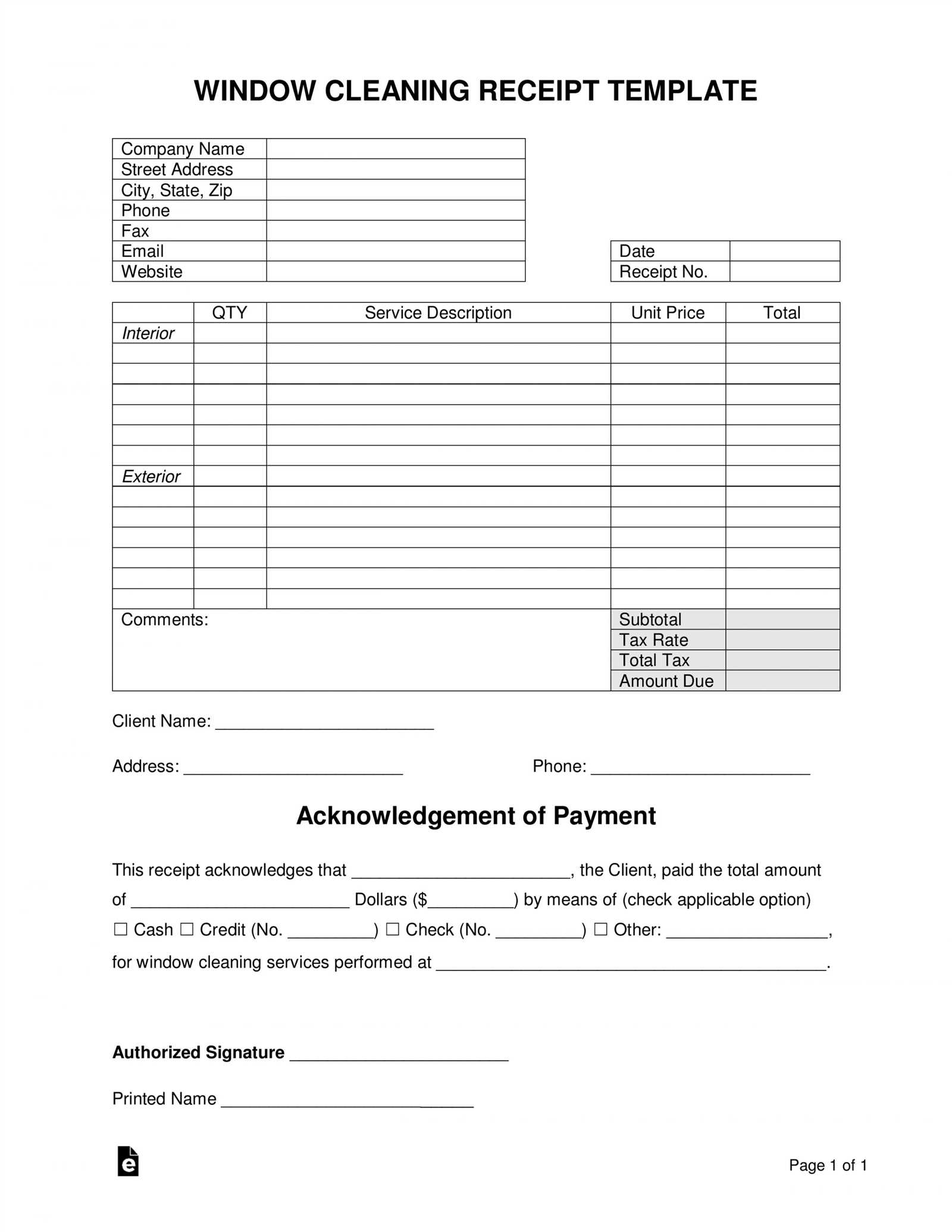
Creating a professional and clear receipt for your dry cleaning service is straightforward with the right template. Start by including key details such as the client’s name, contact information, and the date of service. This helps establish trust and transparency from the first interaction.
Include Itemized Charges for each garment or service. Clients appreciate knowing exactly what they’re paying for. Break down the cost of cleaning, pressing, any additional services, and applicable taxes. This breakdown makes the transaction clear and helps avoid confusion.
Don’t forget to add a payment method section at the bottom of the receipt, indicating whether the client paid by cash, card, or other means. This provides a complete record of the transaction for both the business and the customer.
Lastly, a space for your shop’s contact information and business logo ensures clients know where to return or reach out for future services. Including a thank-you note or reminder for pickup adds a personal touch and enhances customer satisfaction.
Dry Cleaners Receipt Template
A dry cleaner’s receipt template should clearly outline the services provided, the items being cleaned, and the corresponding charges. A well-structured receipt helps ensure accuracy and transparency for both the customer and the business.
Key Information to Include

The receipt must contain the following details:
- Customer Name – Clearly identify the person who dropped off the items.
- Service Description – List the services provided, such as washing, pressing, or stain removal.
- Items Received – Describe each item brought in for cleaning.
- Charges – Break down the cost for each service or item.
- Pick-Up Date – Indicate when the items will be ready for collection.
- Receipt Number – Use a unique identifier for tracking and referencing the transaction.
Template Example

| Customer Name | [Customer Name] |
|---|---|
| Item Description | [Item 1, Item 2, Item 3] |
| Service Provided | [Washing, Pressing, Stain Removal] |
| Total Charge | [Total Amount] |
| Pick-Up Date | [Pick-Up Date] |
| Receipt Number | [Unique Number] |
This template ensures that all critical information is captured in a clear, organized way, reducing the chances of misunderstandings or errors in billing.
Creating a Professional Dry Cleaning Receipt with Necessary Details
To create a professional dry cleaning receipt, ensure the following elements are clearly displayed:
- Business Information: Include your dry cleaning business name, address, phone number, and email. Make sure it’s easy for customers to contact you if needed.
- Receipt Number: Assign a unique receipt number for easy tracking and reference. This will help both you and your customer in case of any inquiries or issues.
- Date of Service: Specify the exact date the service was provided. This helps maintain accurate records for both customer and business.
- Customer Details: Record the customer’s name and contact information. This ensures that the receipt can be matched to the correct customer.
- Itemized List of Services: Break down each item cleaned and the corresponding charges. For example, list “Dry Cleaning – Suit” with the price next to it. This transparency helps avoid confusion.
- Total Amount Due: Include the total cost of services rendered. Ensure that taxes or additional fees are included in the final amount.
- Payment Method: Indicate how the payment was made, whether by cash, credit card, or other means. This is useful for accounting and customer reference.
- Return Date: Specify when the customer can expect their items to be ready for pickup. This helps manage expectations and ensures timely service.
- Terms and Conditions: If applicable, briefly include any relevant terms such as refund policies or liability disclaimers.
Make sure to present the receipt in a clean, organized format. This not only reflects your business’s professionalism but also enhances customer trust and satisfaction.
Customizing a Dry Cleaning Receipt for Business Branding

Include your business logo at the top of the receipt. This makes it immediately recognizable and reinforces your brand identity. Choose a clean, professional design that aligns with your company’s style, whether you go for a minimalist approach or something with more personality.
Customize the color scheme to match your brand’s colors. A well-chosen color palette will help your receipt stand out while maintaining consistency with other marketing materials. Stick to two or three complementary colors to avoid overwhelming the customer.
Incorporate your business name, contact information, and website. This not only helps customers reach you easily but also serves as a reminder of your services. Ensure this information is clear and easy to read by selecting a legible font and appropriate font size.
Consider adding a tagline or slogan that reflects your business values or mission. It can subtly communicate what makes your dry cleaning service unique, giving customers something to remember.
Customize the receipt format to include relevant fields like service type, pricing, and pick-up/delivery details. Adding personalized notes or a thank-you message shows appreciation for the customer’s business, which builds positive relationships.
Offer space for loyalty or discount codes. This can be an effective way to encourage repeat business while subtly promoting your branding through special offers that customers will keep in mind for future visits.
Integrating these elements creates a receipt that does more than just document a transaction–it becomes a tool for reinforcing your business identity and fostering customer loyalty.
Digital vs. Paper Receipts: Choosing the Right Format for Your Business
Choose the format that aligns with your brand’s values and customer needs. Digital receipts reduce paper waste, are easier to store, and can be accessed anytime. They are ideal for customers who value convenience and eco-friendliness. On the other hand, paper receipts can still hold weight in certain sectors where physical proof of purchase is necessary or preferred.
Consider your customer base. If your clients are tech-savvy or prefer having everything in their inbox, a digital receipt might be the best choice. This also saves space in your office and streamlines your record-keeping system. Digital receipts can be automatically generated and emailed, making them a seamless option for modern businesses.
Evaluate the cost and space requirements. Paper receipts require continuous supplies like rolls of paper and ink, along with physical storage space for records. Digital receipts, by contrast, incur no ongoing material costs and can be easily integrated into your accounting or point-of-sale software.
Regulatory compliance should also be taken into account. Some regions or industries have strict rules regarding the retention and format of receipts. Make sure digital solutions comply with local laws regarding tax records and customer privacy.
Think about sustainability. Reducing paper use not only cuts costs but also aligns your business with sustainability practices. A digital approach can enhance your brand image, especially if your customers are environmentally conscious.
In summary, both formats have their advantages. Evaluate your business needs, the preferences of your customers, and the resources available to determine which option works best for you. Balancing both methods might also be a smart approach, offering your customers a choice while optimizing your operations.


